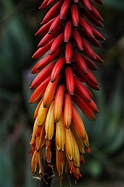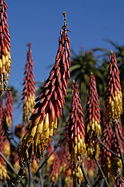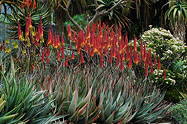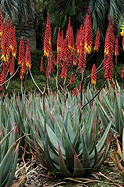This newly-named cultivar has “lived long and prospered” in the Huntington’s Desert Garden for more than 70 years. However, the cultivar name is not a reference to Star Trek but rather harkens back to Greek mythology. Vulcan is the Roman version of the Greek mythological god of fire and smithery, Hephaestus. The cultivar name, then, alludes to both the flame-like floral display and the cool, steely gray color of the foliage. The plant came to the Huntington in 1937 from a Ms. G. E. Clarkson, a collector in South Africa at the time. It was received as A. aculeata but appears to be an open-pollinated hybrid of that species, perhaps with A. cryptopoda. The latter would contribute to the bicolored inflorescences which consist of few-branched panicles bearing two to five attenuate racemes. These bear tightly-packed blood-red buds (of a deeper-hue than most aloes) that open yellow. The rosettes are 50 to 60 cm across, composed of glaucous, gray leaves with a few prickles in a line on the backs of the leaves, reminiscent of A. aculeata, but that species has more prominent, scattered prickles. The buds become showy with color by mid to late December and flower through January in a spectacular mass planting in the upper Desert Garden. The plants are very slow to offset, so this offering was made possible with the advent of a tissue-culture lab at the Huntington. We offer plants of HBG 7361, $7.
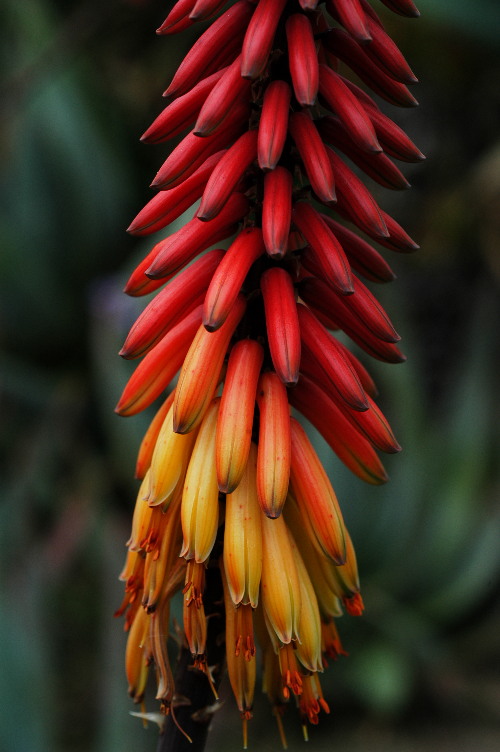
Published in the Cactus and Succulent Journal, Vol. 83 (2), March - April, 2011
